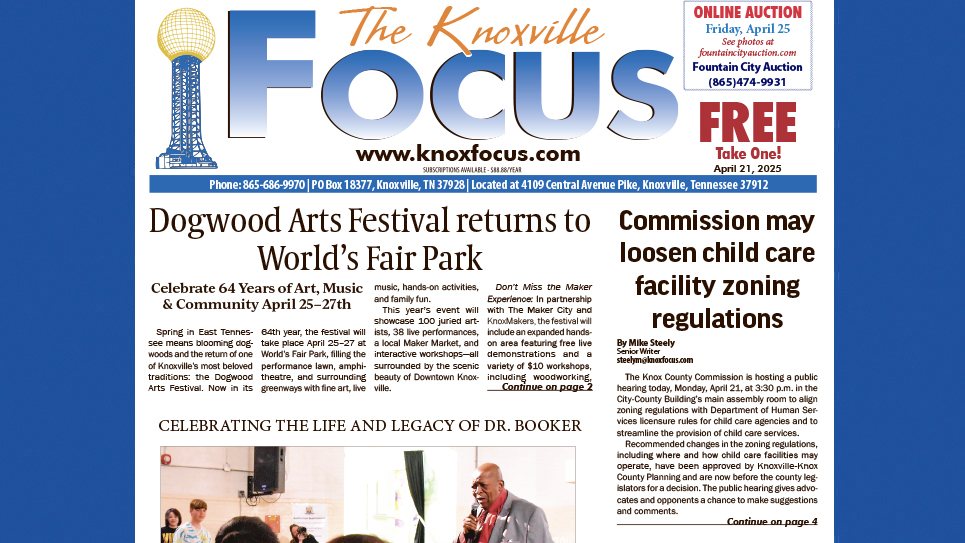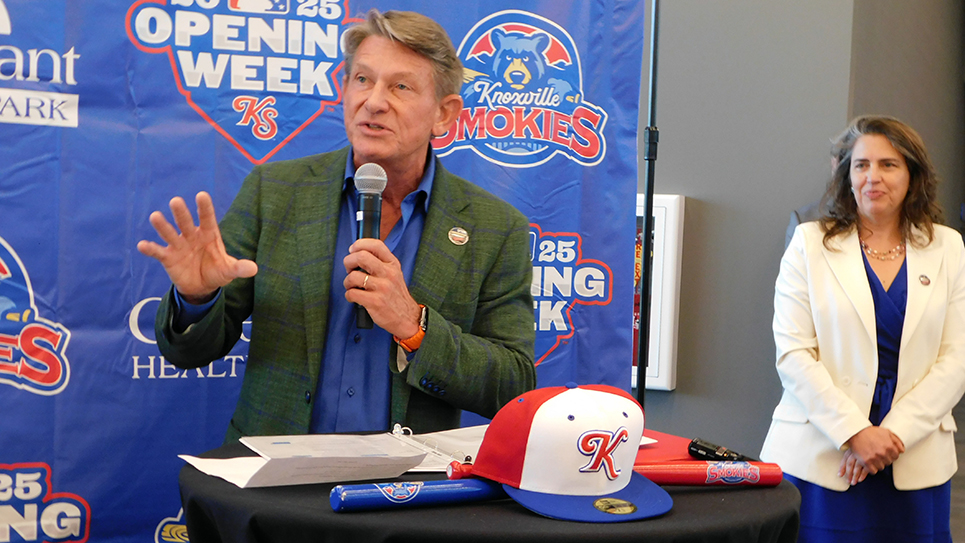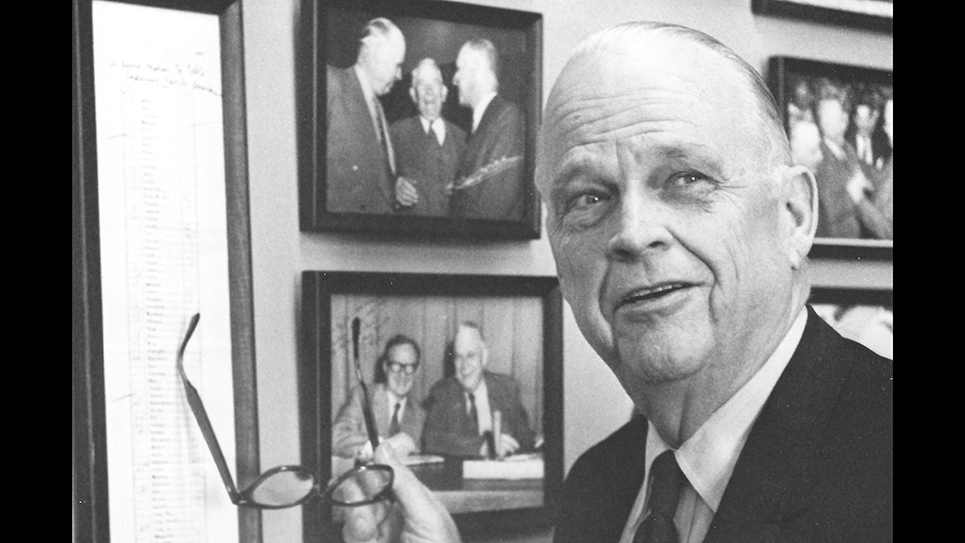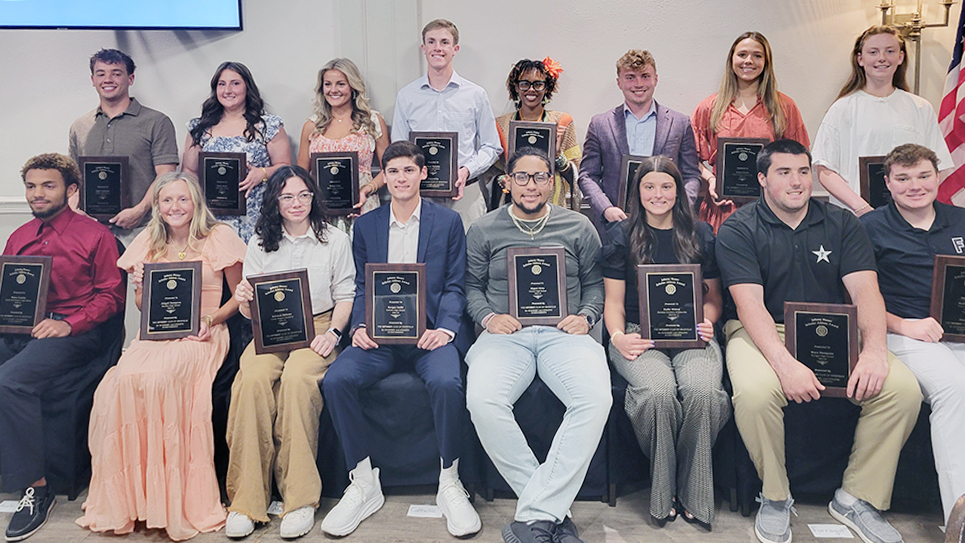Ayres Hall, old scoreboard dominated north end of Shields-Watkins Field
By Tom Mattingly
Stories about Tennessee football come in all shapes and sizes and from a number of perspectives. This one came from a son wanting to honor his family’s influence on Tennessee football history.
The old scoreboard, termed a Postcraft Athletic Timer and located at the north end of Shields-Watkins Field, has been a source of fascination for many Vol fans over the years. The edifice was actually located outside the confines of the stadium near one corner of Alumni Gym.
Before the arrival of the east upper deck auxiliary scoreboard in 1968, this was the only location where Tennessee fans could keep track of the game’s progress, by quarter, score, down and distance, and/or yard line.
A long-ago phone call and subsequent interview introduced me to the people who actually operated the scoreboard from 1940-65.
“My dad, Carl Coleman, worked for many years for Post Sign Company and was involved in erecting the black scoreboard on ‘The Hill’ behind the bleachers at the north end,” said his son, Richard Coleman.
There were two workers inside the structure and two on the east sideline, he said. They communicated by phone, the cord being hooked into a box near the 50-yard line on the east side.
“He was one of those ‘self-educated’ engineers,” said Richard. “He didn’t graduate from Central High School, maybe lacking half a credit, but he’s one of the smartest men I ever knew. Dad became involved in its operation almost from the start and took over after a couple of years. From that time until its demolition, it was more-or-less a family operation.
In 1944, Richard started going to the games with his dad, sitting on the tarpaulin on the east side. “At about age 14, I was with Dad on the field during the first half, helping set up the phone and managing the wire for him.
“He and I would operate the board in the second half, while my brother, Bob, and brother-in-law, Tom Burkhart, took care of the field operation. This continued until the old scoreboard was demolished, and operation was done from the press box.”
Richard also said his dad designed, built, and installed scoreboards for the old Sugar Bowl (Tulane Stadium in New Orleans), Ladd Stadium in Mobile, Ala., and at the University of North Carolina. He didn’t have a business card that said, “We do scoreboards,” but he really didn’t need one.
The new scoreboard was erected in 1940, the season before Bob Neyland and many Vol players headed off to World War II. Neyland, who thought “outside the box” before that term became popular, gave the Colemans very specific instructions about running the board. Note that there was no advertising on the board, but there would be in later years when a new scoreboard was built. Coca-Cola ended up on the new board that arrived in 1966.
“Dad’s directions from Gen. Neyland were to get the information on the board in the shortest time possible,” said Robert. “He even said that speed was more important that absolute accuracy. I defy anyone, even in this day of computers and press box operation, to get data from the field to the scoreboard as fast as we did, with the same degree of accuracy.”
Then came an insight into Neyland’s thought processes. “He told Dad he used the scoreboard. He wanted to know down and distance. He said ‘as soon as you know when the ball’s down, put it up there. If you make a mistake, you can always change it.’”
He said his dad was “uncanny” in being able to “figure out what was going to happen. He could spot the ball and call out the down, distance, and yard line before the official marked the ball for play.
“He would go downfield just prior to a punt and usually the play would end right in front of him.”
It was an all-day proposition for the Colemans. “We’d have an early breakfast and then head for the stadium before noon. Dad hated traffic. We’d park downtown and walk to the stadium. Sometimes he’d work a half day, and I’d ride the bus to meet him.”
Richard recalled doing some scoreboard watching when he was at Neyland Stadium. “I got frustrated when I went over there, and thought, ‘What yard line is it? I can’t see from here.’ The guy sitting in the press box should be able to do that quickly. Some people are a bit hesitant, maybe afraid of making a mistake.”
The family had a remarkable dedication to the football games played at the historic stadium on 15th Street, then Stadium Drive, now Phillip Fulmer Way.
Whenever there was a Tennessee game, a freshman game, the annual Thanksgiving battle between Knoxville High School and Central High, or even an Orange and White game, the Colemans were present, ready to add to the ambience of the storied stadium and field.
It was a matter of family honor.





